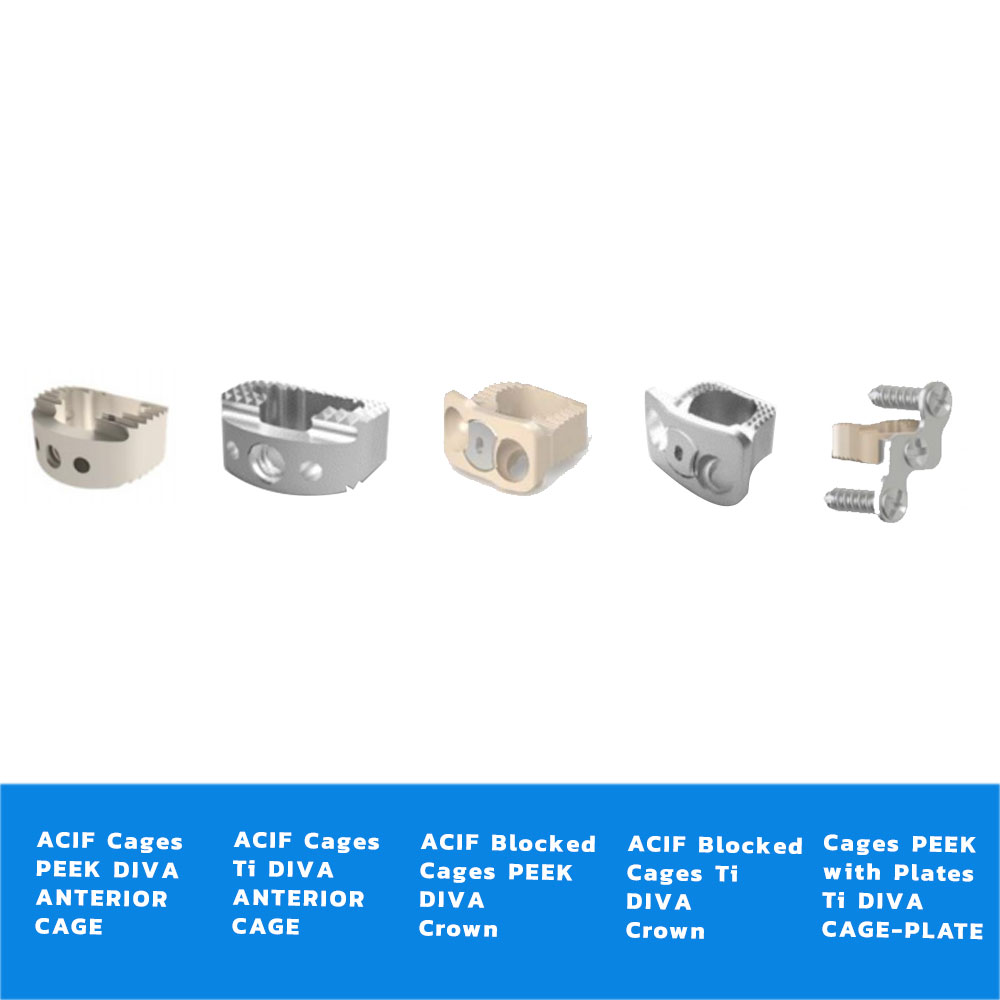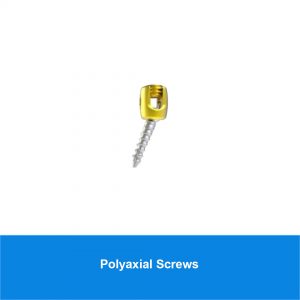Cervical ACIF cages
Anterior Cervical Cages have a large peripheral support area and large holes for the graft. They can be inserted by anterior approach. A blocked version of the cervical anterior cage DIVA exists with a direct fixation of the cage to the vertebral bodies with two bone screws. A small cervical plate could be added to the cage to bring additional stability and to avoid its possible migration.
The anterior cervical cages DIVA are intended to be used in an anterior approach. A cervical anterior
plate may be added to the construct in case of use of a standard anterior cage. DIVA Crown cages
(blocked cages), or blocked cages, are fixed with two titanium TA6V screws.
The Anterior cervical cages DIVA have the following features:
• An anatomic convex profile, offering an intimate contact between the vertebral endplates
and the implants, and respecting the anatomy of the discal space.
• A lordotic shape, restoring the physiological curvature of the cervical spine.
• Stabilization notches reinforcing the anchoring of the implant and preventing its migration.
• An anatomic profile
• A peripheral contact
• A wide graft hole
• Lateral holes to favor the blood flow and graft.
• Radiographic markers to allow a positioning control of the implants in situ for PEEK cages.
• An anterior threading allowing its insertion
• Stabilization holes for the impactor, on each side of the threading, for a safe impaction
• A flat and smooth posterior wall
The cervical cages DIVA are available in several sizes from 4 to 10 for standard corrections. They have
a single width of 15mm and a single depth of 13mm.
A range with a smaller contour is available: from size 4 to 10, with a single width of 13mm and a single
depth of 11mm.
The cervical cages DIVA can be associated to a plate in titanium TA6V to form the Cage-Plate. The
plates have:
• An assembling screw
• Two fixation screws, for an anchoring in the superior and inferior vertebrae
• A shape allowing the implantation on several adjacent levels
Preclinical evaluations have been performed and tests with in vitro manipulation were performed to
evaluate the interaction of implants with the associated instruments





